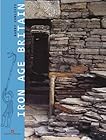<< Other Photo Pages >> Astuvansalmi rock paintings - Rock Art in Finland
Submitted by Andy B on Thursday, 21 January 2010 Page Views: 8593
Rock ArtSite Name: Astuvansalmi rock paintings Alternative Name: Astuvansalmen kalliomaalauksetCountry: Finland Type: Rock Art
Latitude: 61.441667N Longitude: 27.541667E
Condition:
| 5 | Perfect |
| 4 | Almost Perfect |
| 3 | Reasonable but with some damage |
| 2 | Ruined but still recognisable as an ancient site |
| 1 | Pretty much destroyed, possibly visible as crop marks |
| 0 | No data. |
| -1 | Completely destroyed |
| 5 | Superb |
| 4 | Good |
| 3 | Ordinary |
| 2 | Not Good |
| 1 | Awful |
| 0 | No data. |
| 5 | Can be driven to, probably with disabled access |
| 4 | Short walk on a footpath |
| 3 | Requiring a bit more of a walk |
| 2 | A long walk |
| 1 | In the middle of nowhere, a nightmare to find |
| 0 | No data. |
| 5 | co-ordinates taken by GPS or official recorded co-ordinates |
| 4 | co-ordinates scaled from a detailed map |
| 3 | co-ordinates scaled from a bad map |
| 2 | co-ordinates of the nearest village |
| 1 | co-ordinates of the nearest town |
| 0 | no data |
Internal Links:
External Links:
I have visited· I would like to visit
Halla visited - their rating: Cond: 5 Amb: 5 Access: 3

The rock paintings were officially found by the Finnish archaeologist Pekka Sarvas in 1968, though locals knew about them already before that.
The rock where the paintings are located looks like a human head when looked from a certain direction. The form is clearly visible during wintertime while viewed from the ice of the lake. The rock has presumably been some kind of a cult or ceremony site. The paintings are nowadays 7,7 to 11,8 metres above the water-level of lake Saimaa. The lake level was much higher during the making of the rock paintings.
The oldest paintings are made 3000 - 2500 BC. They are located at the highest level (about 11 metres). The water level changed very fast about 2,5 metres with the landslide of Vuoksi. Later on the level slowly went down 8 metres to its present level. All the later paintings have been made from boats during the different historical water-levels.
Source: Wikipedia, read more there.
You may be viewing yesterday's version of this page. To see the most up to date information please register for a free account.


Do not use the above information on other web sites or publications without permission of the contributor.
Nearby Images from Flickr






The above images may not be of the site on this page, but were taken nearby. They are loaded from Flickr so please click on them for image credits.
Click here to see more info for this site
Nearby sites
Click here to view sites on an interactive map of the areaKey: Red: member's photo, Blue: 3rd party photo, Yellow: other image, Green: no photo - please go there and take one, Grey: site destroyed
Download sites to:
KML (Google Earth)
GPX (GPS waypoints)
CSV (Garmin/Navman)
CSV (Excel)
To unlock full downloads you need to sign up as a Contributory Member. Otherwise downloads are limited to 50 sites.
Turn off the page maps and other distractions
Nearby sites listing. In the following links * = Image available
44.5km SSE 162° Lemin Heiluvakivi* Natural Stone / Erratic / Other Natural Feature
47.4km E 83° Strange rock Kummakivi* Natural Stone / Erratic / Other Natural Feature
80.0km W 268° Liikkuva kivi* Natural Stone / Erratic / Other Natural Feature
109.2km S 170° Labyrinth Krutoyar* Turf Maze
119.2km SSW 209° Ahvenkoski Harbour Ancient Village or Settlement
132.2km ENE 57° Pirunpöytä* Rock Art
135.3km NW 324° Saraakallio Rock Art
140.0km ESE 118° Tiversk* Ancient Village or Settlement
140.3km ESE 104° Seid island Burnev* Natural Stone / Erratic / Other Natural Feature
156.1km SSW 192° Megaliths of Hogland Island* Standing Stones
156.5km W 260° Hovin Manor Stone Rock Art
173.3km WSW 255° Kauriala Uhrikivi Rock Art
187.7km W 263° Rapola* Hillfort
191.6km W 268° Järvensuo I* Ancient Village or Settlement
191.8km SW 227° Pihlajamäki Hiidenkirnu Natural Stone / Erratic / Other Natural Feature
196.1km SW 227° Käpylä Hiidenkirnu* Natural Stone / Erratic / Other Natural Feature
199.7km SW 226° National Museum of Finland Museum
212.8km SE 143° Stone Head Peterhof* Sculptured Stone
216.8km SSW 194° Ehalkivi* Natural Stone / Erratic / Other Natural Feature
218.2km SSW 199° Kaarnakivi* Natural Stone / Erratic / Other Natural Feature
224.2km SSW 204° Saadumetsa suurkivi* Natural Stone / Erratic / Other Natural Feature
224.9km SE 137° Hermitage Museum* Museum
226.5km SSW 206° Jaani-Tooma Suurkivi* Natural Stone / Erratic / Other Natural Feature
229.6km SSW 205° Tammispea rändrahn* Natural Stone / Erratic / Other Natural Feature
243.0km SSW 208° Hundikangrud* Cist
View more nearby sites and additional images






 We would like to know more about this location. Please feel free to add a brief description and any relevant information in your own language.
We would like to know more about this location. Please feel free to add a brief description and any relevant information in your own language. Wir möchten mehr über diese Stätte erfahren. Bitte zögern Sie nicht, eine kurze Beschreibung und relevante Informationen in Deutsch hinzuzufügen.
Wir möchten mehr über diese Stätte erfahren. Bitte zögern Sie nicht, eine kurze Beschreibung und relevante Informationen in Deutsch hinzuzufügen. Nous aimerions en savoir encore un peu sur les lieux. S'il vous plaît n'hesitez pas à ajouter une courte description et tous les renseignements pertinents dans votre propre langue.
Nous aimerions en savoir encore un peu sur les lieux. S'il vous plaît n'hesitez pas à ajouter une courte description et tous les renseignements pertinents dans votre propre langue. Quisieramos informarnos un poco más de las lugares. No dude en añadir una breve descripción y otros datos relevantes en su propio idioma.
Quisieramos informarnos un poco más de las lugares. No dude en añadir una breve descripción y otros datos relevantes en su propio idioma.